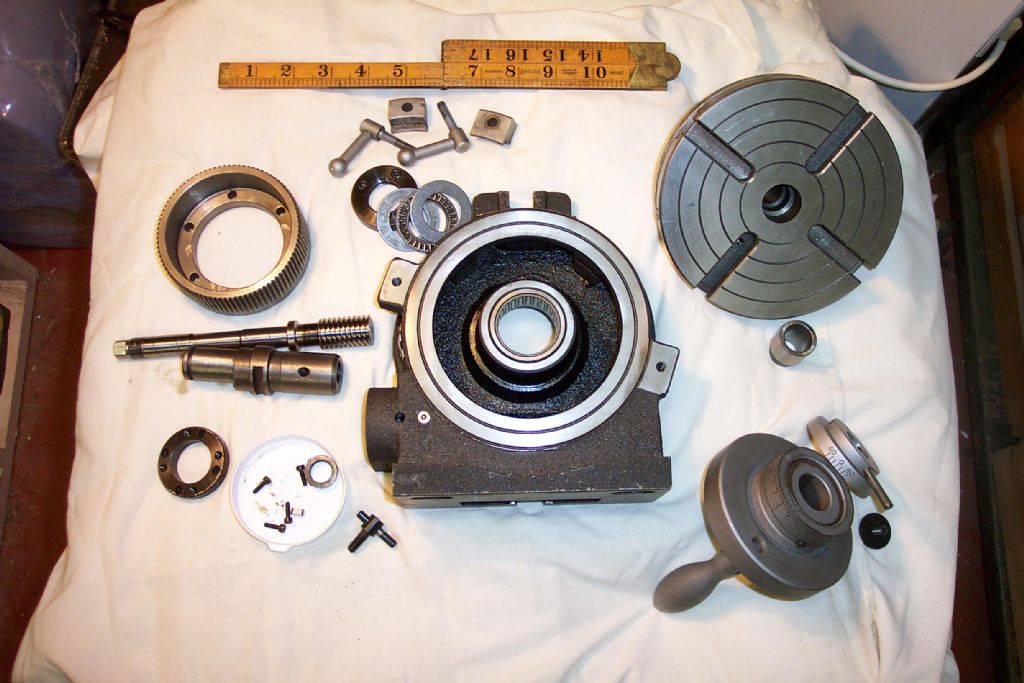Had a time to play with the new table a bit now, so will venture some observations in reply to Geoff's request for an opinion. Caveat lector – I haven't used an RT before, and I'm no engineer,.
Measurements seem to check out OK. There is some runout in the Morse taper, which I estimate at about 0.015mm, and the table surface is parallel to the base to better than 0.01mm. I measured the latter by mounting a clock in the mill spindle, zeroing the clock and the quill DRO, raising the quill, rotating the RT bodily, lowering the quill back to zero then measuring off the clock. Rotating the table under the clock with everthing else stationary gives a flutter of perhaps 0.005mm, but I'm not sure what that proves, if anything.
When I first took it to pieces, all the fasteners were done up with near Allen-key breaking force. As a result there is some quite deep scarring where setting screws bear on shafts etc. Minor niggle I suppose.
There are no thrust or radial bearings anywhere – everything is metal-to-metal. The worm screw is retained in the body of the eccentric by a shoulder at the 'far' end, and by a collar theaded onto the worm shaft at the handle end. This collar incidentally is locked onto the shaft by two grubscrews which bear directly on the thread, which was consequently a bit mangled. Backlash is adjusted by tightening the collar onto a 'wave' type spring washer which bears on the front of the eccentric. This means that if you turn the handwheel clockwise, as recommended in the manual, the spring is in compression. I can't see how this is meant to work – maybe the manual is just wrong.
With the worm fully engaged the table rotates freely for about three quarters of a revolution, then binds somewhat for the remainder. I gather this is par for the course with these tables. However, although partially disengaging the worm helps (with the penalty of more backlash of course), even with the worm almost wholly disengaged it's still there. I don't understand that yet – any elucidation would be appreciated!
The table locks work well – there is no movement of the table on tightening them.
Overall I'm not delighted with this thing, but it's OK for the money and will do what I want after a bit of tweaking.
Dunno if that is any help in making your decision Geoff, but best I can do for now.
Regards, Bob.
 Michael Gilligan.
Michael Gilligan.


 "Weldtite" Lithium Grease is ideal for applications like this, and the postal service from
"Weldtite" Lithium Grease is ideal for applications like this, and the postal service from 

